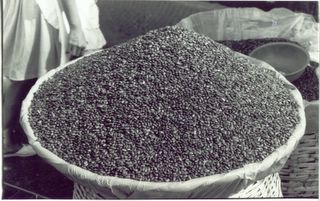Pain Part III
Handcuffs and Stethoscopes
By JOHN TIERNEY
Published: July 23, 2005
The current zeal for sending doctors to jail for writing painkiller prescriptions may seem baffling, especially to the patients who relied on the doctors for pain relief. But if you consider it from the perspective of the agents raiding the doctors' offices, you can see a certain logic.
During the war on drugs in the 1980's and 1990's, federal and local agents risked their lives going after drug gangs on the streets. As their budgets for drug enforcement soared, they arrested hundreds of thousands of people annually and filled a quarter of American prison cells with drug offenders.
But what did they have to show for it? Drugs remained as available as ever on the streets - and actually got a lot cheaper. The street price of heroin and cocaine dropped by more than half in the last two decades. Dealers just went on dealing, not only lowering their prices but also selling stronger, purer versions of heroin, cocaine and marijuana.
Given this record, and the pressure from Congress to show results, it's understandable that the Drug Enforcement Administration and local police departments hit on a new strategy: defining deviancy up. Federal and local authorities shifted their focus to doctors and the new scourge of OxyContin and similar painkillers, known generally as opioids.
As quarry for D.E.A. agents, doctors offered several advantages over crack dealers. They were not armed. They were listed in the phone book. They kept office hours and records of their transactions. And unlike the typical crack dealer living with his mother, they had valuable assets that could be seized and shared by the federal, state and local agencies fighting the drug war.
I don't mean to suggest that the doctors were all blameless, or that OxyContin wasn't being diverted to the black market and being abused. But the problem wasn't nearly as bad as federal and local authorities made it out to be.
The D.E.A. announced that in two years, there had been 464 OxyContin-related deaths, but most of the victims had taken other drugs, too, so the cause of death was uncertain. Ronald Libby, a political scientist at the University of North Florida, notes that even that figure is a minuscule fraction (0.00008 percent) of the number of OxyContin prescriptions written, and that it's dwarfed by the more than 32,000 people who die in the same period from gastrointestinal bleeding from other painkillers, like aspirin and ibuprofen.
The OxyContin crisis was fanned by sensationalized press coverage and by popular fears that unsuspecting patients getting this painkiller were being turned into dangerous addicts. While it's true that chronic-pain patients taking opioids for a long time require higher and higher doses, the drugs typically don't give them a high or interfere with their lives. Instead, the drugs enable them to function.
Researchers have repeatedly found that very few patients taking opioids have a hard time stopping once their pain goes away. The ones who can't stop - the compulsive addicts - are typically people with a history of abusing alcohol and other drugs.
But many doctors are now afraid to give painkillers to either kind of patient. The D.E.A. tried reassuring them by working with pain-management experts to produce a pamphlet setting out guidelines for doctors who want to avoid investigation. But last fall, the agency said it wasn't bound by the guidelines after all, and could investigate even when it had no reason to suspect a doctor.
That shift prompted a letter from the attorneys general of 30 states, who complained that patients were not getting proper pain relief because the D.E.A. was confusing and scaring doctors.
The state officials warned that "we cannot cast a broad net over all health care practitioners, hoping that a few criminals will be caught while the other cases are thrown out."
If enough doctors are jailed or scared into not writing prescriptions, it's conceivable that this drug war could have more impact than the ones against heroin and cocaine - doctors, after all, are harder to replace than crack dealers. But even if there's less OxyContin on the street, is that worth the suffering of patients who can't get the painkillers they need?
Maybe some OxyContin addicts would be helped, but consider the progress the White House's drug-policy agency found last year in a field survey on drug use in Cincinnati:
"Because diverted OxyContin is more expensive and difficult to purchase," the agency reported, "users have switched to heroin."
Email: tierney@nytimes.com
* * *
For Further Reading:
Treating Doctors as Drug Dealers: The DEA’s War on Prescription Painkillers by Ronald T. Libby. Cato Institute, 28 pp., June 16, 2005.
Saying Yes: In Defense of Drug Use by Jacob Sullum. Jeremy P. Tarcher, 340 pp., May 2003.
“Fisking the DEA” by Radley Balko. The Agitator (blog), May 15, 2005.
Report: Summary of Medical Examiner Reports on Oxycodone-Related Deaths Office of Diversion Control, Drug Enforcement Administration, May 2002.
The Price and Purity of Illicit Drugs: 1981 Through the Second Quarter of 2003. Office of National Drug Control Policy, 109 pp., November 2004.
Letter from state attorneys general to the Drug Enforcement Administration. March 21, 2005.




